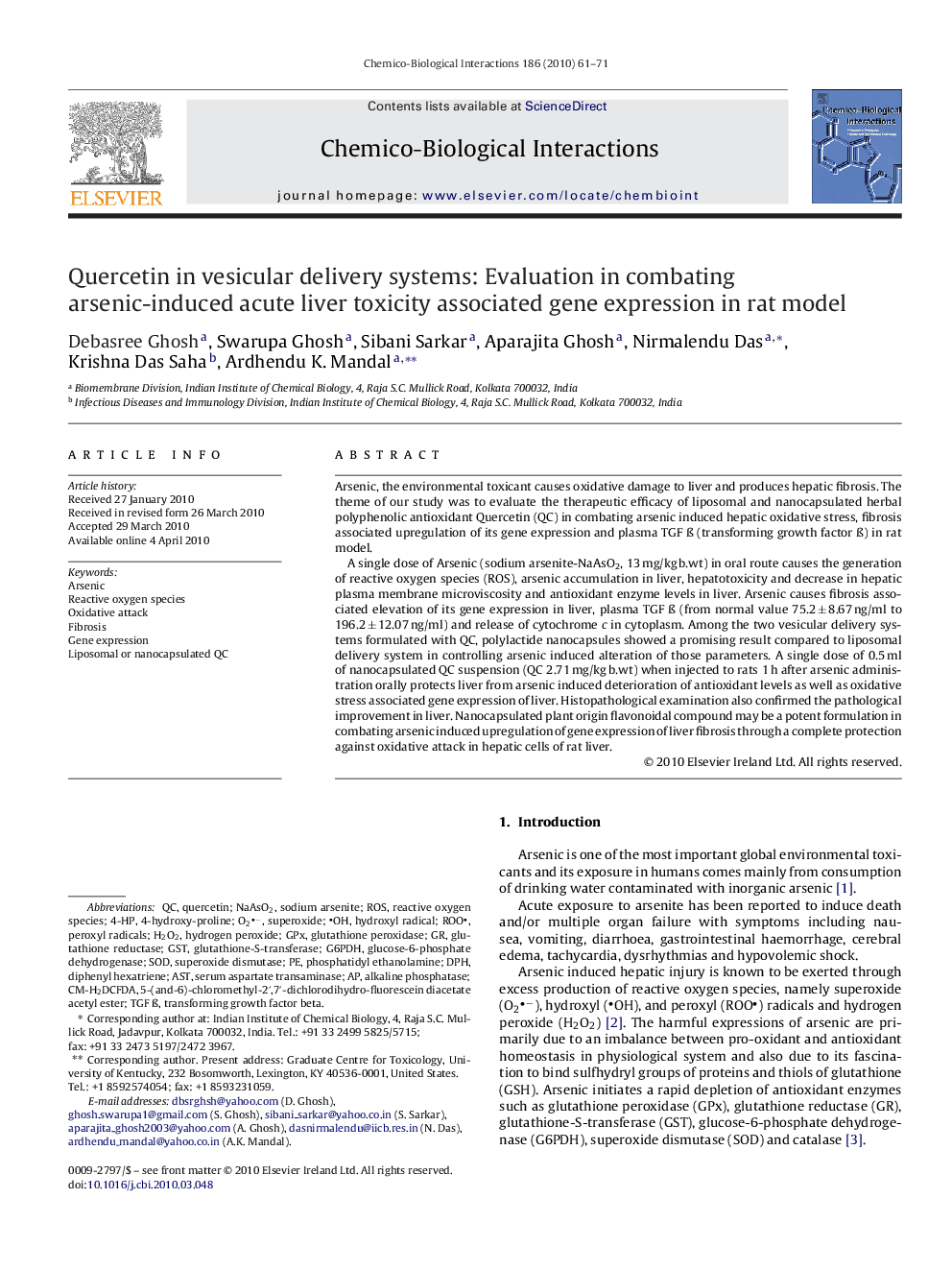| Article ID | Journal | Published Year | Pages | File Type |
|---|---|---|---|---|
| 2582007 | Chemico-Biological Interactions | 2010 | 11 Pages |
Abstract
A single dose of Arsenic (sodium arsenite-NaAsO2, 13 mg/kg b.wt) in oral route causes the generation of reactive oxygen species (ROS), arsenic accumulation in liver, hepatotoxicity and decrease in hepatic plasma membrane microviscosity and antioxidant enzyme levels in liver. Arsenic causes fibrosis associated elevation of its gene expression in liver, plasma TGF à (from normal value 75.2 ± 8.67 ng/ml to 196.2 ± 12.07 ng/ml) and release of cytochrome c in cytoplasm. Among the two vesicular delivery systems formulated with QC, polylactide nanocapsules showed a promising result compared to liposomal delivery system in controlling arsenic induced alteration of those parameters. A single dose of 0.5 ml of nanocapsulated QC suspension (QC 2.71 mg/kg b.wt) when injected to rats 1 h after arsenic administration orally protects liver from arsenic induced deterioration of antioxidant levels as well as oxidative stress associated gene expression of liver. Histopathological examination also confirmed the pathological improvement in liver. Nanocapsulated plant origin flavonoidal compound may be a potent formulation in combating arsenic induced upregulation of gene expression of liver fibrosis through a complete protection against oxidative attack in hepatic cells of rat liver.
Keywords
NaAsO2CM-H2DCFDAG6PDHDPHROOGSTGPXO2−ROSHydrogen peroxideSodium arseniteArsenicASTAlkaline phosphataseGene expressionTransforming Growth Factor Betadiphenyl hexatrienePeroxyl radicalsHydroxyl radicalSODSuperoxideSuperoxide dismutasephosphatidyl ethanolamineFibrosisH2O2Quercetinglutathione-S-transferaseglutathione reductaseglutathione peroxidaseglucose-6-phosphate dehydrogenaseReactive oxygen species
Related Topics
Life Sciences
Environmental Science
Health, Toxicology and Mutagenesis
Authors
Debasree Ghosh, Swarupa Ghosh, Sibani Sarkar, Aparajita Ghosh, Nirmalendu Das, Krishna Das Saha, Ardhendu K. Mandal,
